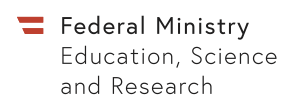Diverted to Strasshof
Hungarian Jewish Forced Labourers in Vienna and its Vicinity (1944-1945)
Following the German occupation in 1944, the Hungarian government deported some 440,000 Jews from Hungary between May and July. Most of them were sent to Auschwitz. However, in late June, 15,000 Jews from four Hungarian transit camps (Baja, Debrecen, Szeged, and Szolnok) were not deported to Auschwitz, but to Strasshof an der Nordbahn, a transit camp near Vienna. The deportees mostly comprised Jews who had been living in the many settlements, towns, and small villages of southern Hungary. In the Strasshof camp, a regular ‘slave market’ was opened to meet the demands of Austrian entrepreneurs — both private and municipal — who urgently required labour in their factories and businesses. The deported families had to work in Vienna and in Lower Austria on farms, in commerce, and especially in the war industry.
The main goal of this joint project of the University of Szeged (SZTE) and the Vienna Wiesenthal Institute for Holocaust Studies (VWI), which is funded by the Hungarian National Research, Development, and Innovation Office (NKIF) and the Austrian Science Fund (FWF), is to create a transnational history of Hungarian Jewish forced labour in Vienna and its surroundings. The project aims to further develop the previous research project of the VWI, which was funded by the Foundation Remembrance, Responsibility, and Future (EVZ) and concluded in the spring of 2018, with new, unexplored, and unprocessed documents. In order to understand the entire history of Hungarian Jewish forced labour in Vienna and its surroundings, the archival material of those companies and settlements in which Jewish deportees worked in 1944/1945 also needs to be included. In addition, testimonies of survivors who reported on the events, the deportations, and forced labour in various forms after the Second World War must be identified. To this end, all manner of forums around the world will be identified and incorporated into the project.
Some testimonies - mostly concerning forced labour in Vienna – were already collected during the previous project conducted by the VWI. Yet further intensive archival and museum research is required, including the exploration of private collections, on the circumstances of deportation and forced labour in Vienna and its vicinity, on the conditions of return to Hungary, and on legal steps taken after the war.
Another goal is the expansion of the VWI’s existing bilingual (Hungarian and German) website and database with the Hungarian aspect of the deportation, namely the run-up to the forced relocation to Vienna and its vicinity. The website will also be made available to researchers and laypersons in English. The results will moreover be made available to high schools both in Hungary and Austria as well as for local, regional, national, and international memorial events.
This four-year project is run in Hungary by the Szeged-based historian Judit Molnár and at the VWI by Kinga Frojimovics.
![]()






